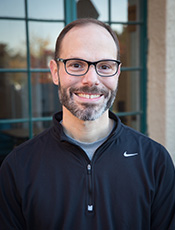By Ramsey Hachem, M.D.
Washington University School of Medicine Barnes-Jewish Hospital
Division of Pulmonary and Critical Care
February 2013
Pulmonary rehabilitation is an integral part of lung transplant and lung volume reduction surgery programs. In fact, pulmonary rehabilitation is an important part of the multidisciplinary care of patients with lung disease. Patients afflicted by lung disease often become deconditioned over time because physical exertion typically worsens breathlessness. This leads to a vicious cycle of progressively performing less strenuous activity and inactivity during daily life causing muscle weakness, which in turn exacerbates breathlessness. This is particularly true for patients who have had long-standing lung disease. The goals of pulmonary rehabilitation are to reduce breathlessness with exertion and improve functional status. Although pulmonary rehabilitation does not improve lung function, it does improve muscle strength and endurance. This improvement in conditioning increases exercise capacity and improves quality of life.
The typical pulmonary rehabilitation program consists of multiple aspects including exercise training, education, nutritional counseling, and psychological support. Exercise training is the key component and this usually consists of walking on a treadmill or on a track. The goal is walking continuously without stopping for 30 minutes. This is more important than speed, and the speed can be as slow as 0.7 or 0.8 miles per hour in the beginning. As endurance improves, speed can be increased and a small grade can be added for increased intensity. Using a stationery bicycle is an alternative to walking, but this is generally easier than walking since the patient is seated and does not carry his or her weight during exercise. As such, a stationery bicycle is an ideal starting point for someone with severe deconditioning who may be able to progress to walking on a treadmill over time. Although lower extremity exercise training is more common, upper extremity exercises using an arm ergometer can also be very effective, and some programs incorporate both upper and lower extremity exercises. In patients with advanced lung disease, oxygen saturation generally decreases during exercise; this is managed with a liberal use of supplemental oxygen to maintain adequate oxygen saturations. This approach is safe even among patients who have elevated carbon dioxide levels. Many patients begin to notice an improvement in exercise tolerance and functional status in 4 or 6 weeks.
Education is an important part of pulmonary rehabilitation. Understanding one’s disease provides insights into its management and can be empowering. For example, identifying environmental triggers for exacerbations can lead to avoidance of these triggers and improved symptom control. Smoking cessation is critical for patients with lung disease, and many pulmonary rehabilitation programs have affiliated smoking cessation counseling and dedicated programs. In addition, rehabilitation programs can teach patients breathing strategies such as pursed-lip breathing to slow their breathing and take deeper breaths. Some patients with advanced lung disease are overweight while others are underweight. Both weight extremes adversely affect breathing, and nutritional counseling by a dietician can be very helpful. A healthy, calorie-restricted diet in combination with cardiovascular exercise is the most effective way to lose weight. On the other hand, nutritional supplements and a high-protein diet can help underweight patients build muscle mass and improve exercise tolerance. Lastly, many patients with advanced lung disease suffer from depression or anxiety. Emotional counseling and support groups consisting of patients with similar problems are often very effective methods to cope with the psychological stresses of lung disease.
Many patients referred for lung transplantation are debilitated because of the severity and chronicity of their lung disease. In addition to impairing their functional status and exercise tolerance, this can hinder their recovery after transplantation, especially if medical complications arise in the early post-operative period. Therefore, patients are enrolled in pulmonary rehabilitation while awaiting transplantation to improve and maintain endurance and muscle strength to the extent possible. Post-operatively, pulmonary rehabilitation is critical to maximize the functional gains of transplantation.

